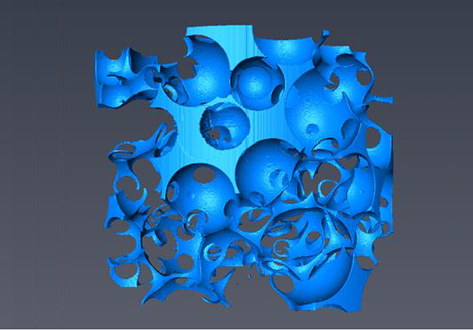Analyzing the Relationship between Capillary Pressure, Saturation, and Interfacial Area for a Three-Phase Flow System in Porous Media
In this study, we examined the relationship between capillary pressure, saturation, and interfacial area for a three-phase flow system. Using x-ray microtomography we were able to capture high-resolution three-dimensional images of the flow system, from which the saturation, interfacial area, and capillary pressure were determined.

Multi-phase flow in porous media includes many instances of subsurface flow. Three-phase flow in particular is important in situations of enhanced oil recovery, CO2 sequestration, and groundwater remediation. Many studies have been performed on how two fluid phases (oil/water or air/water) behave in porous media, but very few studies exist on three-phase flow systems (e.g. oil/water/air). This work presents data collected via x-ray micro-tomography resulting in high-resolution three-dimensional images of the fluid configurations for varying degrees of saturation. The relationship of capillary pressure (Pc), saturation (Sw), and fluid-fluid interfacial area (anw) was found to eliminate hysteresis for the oil-water fluid pair in the water-wet system, but due to insufficient data, this could not be confirmed for the air-oil fluid pair in the water-wet system nor either fluid pair in the fractionally-wet system. Additionally, for the oil-water fluid pair the wettability of the medium had a pronounced effect on the capillary pressure-saturation-interfacial area relationship, however wettability did not alter the capillary pressure-saturation-interfacial area relationship for the air-oil fluid pair.